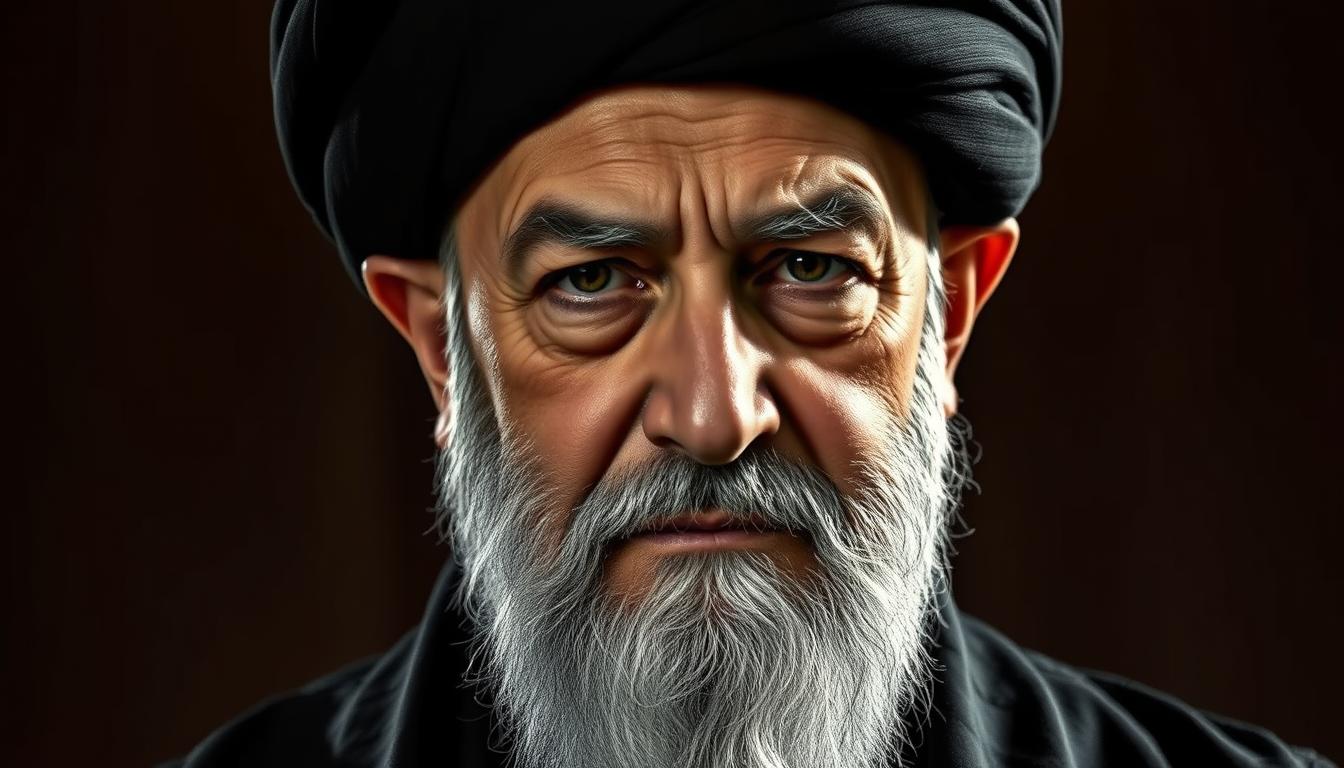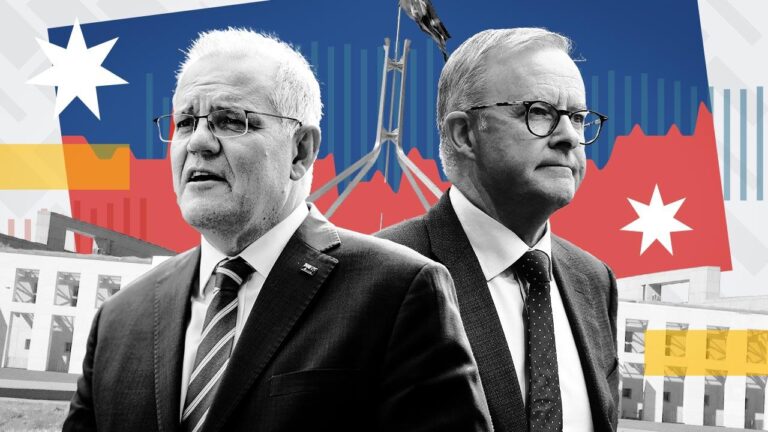
Ali Khamenei has been a pivotal figure in shaping Iran’s political landscape. As the Iranian Supreme Leader, he has held significant influence over the country’s governance and policies.
Under his leadership, Iran has navigated complex domestic and international challenges, maintaining a delicate balance between its political, social, and economic interests. Khamenei’s role in Iranian politics has been instrumental in guiding the country’s response to global events and internal reforms.
His inspirational leadership has made a lasting impact on Iran’s trajectory, making him a figure of considerable interest and study.
The Early Years: Khamenei’s Path to Leadership
In the city of Mashhad, Ali Khamenei’s family background and early religious education played a crucial role in his development as a religious and political leader. Mashhad, being a significant religious center in Iran, provided a fertile ground for Khamenei’s spiritual growth.

Family Background and Childhood in Mashhad
Ali Khamenei was born into a clerical family in Mashhad in 1939. His father, Seyed Javad Khamenei, was a respected cleric, and his mother, Khadijeh Mirdamadi, came from a family with a strong religious background. Growing up in such an environment, Khamenei was exposed to religious teachings from an early age, which significantly influenced his worldview and future career.
Religious Education and Scholarly Development
Khamenei’s religious education began in Mashhad, where he studied at the Qom Theological Seminary. He was deeply influenced by prominent clerics and theologians, including Ayatollah Khomeini, whose ideas would later shape Iran’s political landscape. Khamenei’s scholarly pursuits were not limited to religious studies; he also developed an interest in political activism and social issues.
Formative Influences and Spiritual Journey
Khamenei’s spiritual journey was shaped by his experiences in Mashhad and his interactions with influential religious figures. His exposure to the works of prominent Islamic thinkers and his involvement in religious and political discussions during his formative years contributed to his ideological development. These early influences played a crucial role in shaping his vision for Iran and his role as a religious leader.
Revolutionary Activities and Political Awakening
Ali Khamenei’s journey to becoming the Supreme Leader of Iran began with his active involvement in revolutionary activities against the Shah’s regime. This period was crucial in shaping his political ideology and preparing him for his future roles.
Opposition to the Shah’s Regime
Khamenei’s opposition to the Shah’s authoritarian rule began in the 1960s, influenced by the political and social unrest in Iran. He was involved in underground movements and was influenced by revolutionary ideologies. His activism led to multiple arrests and periods of imprisonment.
Role in the 1979 Islamic Revolution
The 1979 Islamic Revolution marked a significant turning point in Khamenei’s life. He played a crucial role in organizing protests and mobilizing support against the Shah’s regime. His efforts were instrumental in the success of the revolution, which led to the establishment of the Islamic Republic of Iran.
Relationship with Ayatollah Khomeini
Khamenei’s relationship with Ayatollah Khomeini was pivotal in his rise to prominence. He was a close ally and supporter of Khomeini, who later became the leader of the Iranian Revolution. This relationship not only elevated Khamenei’s status within the revolutionary movement but also laid the foundation for his future leadership roles.
The combination of Khamenei’s revolutionary activities, his opposition to the Shah, and his close relationship with Ayatollah Khomeini positioned him for his eventual succession to the role of Supreme Leader.
From President to Iranian Supreme Leader Ali Khamenei
Khamenei’s path to becoming the Supreme Leader involved overcoming numerous obstacles, including a life-threatening assassination attempt. This event not only tested his resolve but also galvanized his position within the Iranian political landscape.
Surviving an Assassination Attempt
On June 27, 1981, Ali Khamenei survived an assassination attempt when a bomb exploded during a press conference. The blast injured his right arm and vocal cords, leaving him with lifelong health issues. Despite this close call, Khamenei continued to play a crucial role in Iranian politics, demonstrating his resilience and determination.
Presidential Term (1981-1989)
Khamenei’s presidency was marked by significant political and social change in Iran. Following the assassination of President Mohammad-Ali Rajai, Khamenei was elected as the President of Iran in 1981. During his term, he worked closely with Ayatollah Khomeini, who was the Supreme Leader at the time. Khamenei’s presidency was characterized by his efforts to stabilize the government and navigate the challenges of the Iran-Iraq War.
The Unexpected Succession to Supreme Leadership
After Ayatollah Khomeini died in 1989, Khamenei was unexpectedly chosen as the new Supreme Leader. This succession was a pivotal moment, as Khamenei had to consolidate power and establish his authority within the complex Iranian political hierarchy. His experience as President and his religious standing helped him navigate this transition successfully.
The transition of Ali Khamenei from President to Supreme Leader was a significant turning point in Iranian history, shaping the country’s political trajectory for decades to come.
The Supreme Leader’s Constitutional Powers
As the Supreme Leader of Iran, Ali Khamenei holds significant constitutional powers that shape the country’s political landscape. The Supreme Leader’s role is central to Iran’s political system, embodying the principles of Velayat-e Faqih, or governance by Islamic jurists.
Legal Authority in Iran’s Political System
The Supreme Leader has the final say in matters of state, serving as the highest authority in the country’s political hierarchy. This position grants Khamenei considerable influence over key decisions, ensuring alignment with Iran’s Islamic governance framework.
Control Over Military and Security Forces
One of the Supreme Leader’s critical constitutional powers is control over Iran’s military and security forces. This authority enables Khamenei to direct national security policies and oversee the armed forces, maintaining stability and defending the nation’s interests.
Influence on Judicial and Legislative Bodies
The Supreme Leader also exerts significant influence over Iran’s judicial and legislative bodies. This ensures that the country’s laws and legal interpretations conform to Islamic principles, further consolidating the Supreme Leader’s role in shaping Iran’s governance.
In summary, the constitutional powers vested in the Supreme Leader underscore the significance of this position in Iran’s political system. Ali Khamenei’s leadership continues to play a pivotal role in guiding the country’s governance and national security.
Khamenei’s Religious and Political Ideology
Understanding Khamenei’s religious and political ideology is crucial to grasping the complexities of Iran’s political system and its global interactions. His beliefs have shaped the country’s governance, international relations, and social fabric.
Interpretation of Velayat-e Faqih (Islamic Governance)
Khamenei’s interpretation of Velayat-e Faqih, or the guardianship of the Islamic jurist, is central to his ideology. This concept, rooted in Shia Islamic thought, posits that the Supreme Leader has divine authority over the state and its people. Khamenei has expanded on this idea, emphasizing the importance of clerical rule in maintaining Islamic values and guiding the nation.
The implementation of Velayat-e Faqih under Khamenei’s leadership has resulted in a robust framework for governance, where the Supreme Leader holds significant influence over state affairs.
Anti-Imperialism and Self-Reliance Philosophy
A core tenet of Khamenei’s ideology is his commitment to anti-imperialism. He views Western powers, particularly the United States, with suspicion, advocating for Iran’s self-reliance and resistance to foreign influence. This stance is reflected in his support for domestic industries and his cautious approach to international diplomacy.
Khamenei’s philosophy promotes the idea that Iran should be economically and militarily independent, reducing its vulnerability to external pressures.
Vision for Islamic Unity and Resistance
Khamenei envisions a united Islamic world, where nations stand together against global powers that he perceives as oppressors. His call for Islamic unity is accompanied by a strong advocacy for resistance against what he sees as injustice and oppression, particularly in the context of the Israeli-Palestinian conflict.
This vision has influenced Iran’s foreign policy, with the country supporting various groups across the Middle East that align with its ideological stance.
Domestic Policies and Economic Management
The Supreme Leader’s role in Iran’s domestic policies is multifaceted, encompassing economic management, social welfare, and cultural direction. Under Ali Khamenei’s guidance, Iran has navigated complex domestic issues, including reconstruction and economic hardship.
Navigating Post-War Reconstruction
Following the Iran-Iraq War, Khamenei played a crucial role in post-war reconstruction efforts. The country faced significant challenges, including rebuilding infrastructure and revitalizing the economy. Khamenei’s leadership helped mobilize resources and implement policies aimed at stabilizing and growing the economy.
Response to Economic Sanctions
Iran’s economy has been subject to various international sanctions, which have had a profound impact on its economic management. Khamenei has adopted a stance of resistance against these sanctions, promoting self-reliance and domestic production. This approach has been reflected in policies aimed at reducing dependence on foreign goods and fostering a more resilient economy.
Social and Cultural Policy Direction
Khamenei’s influence extends beyond economic management to social and cultural policies. He has emphasized the importance of preserving Iran’s cultural heritage and promoting Islamic values. These policies have shaped the social fabric of Iran, influencing education, media, and public life.
The Supreme Leader’s domestic policies have been designed to address the complex challenges facing Iran, from economic hardship to cultural preservation. Through his leadership, Khamenei continues to play a pivotal role in shaping the country’s future.
Foreign Policy Under Khamenei’s Leadership
Since becoming the Supreme Leader of Iran, Ali Khamenei has had a profound impact on the country’s foreign policy. Khamenei’s influence on Iran’s foreign policy has been marked by a complex interplay of ideological commitments and pragmatic considerations. This blend of ideology and pragmatism has guided Iran’s interactions with the world, shaping its relations with Western powers, its role in regional affairs, and its stance on critical issues like the nuclear program.
Relations with Western Powers and the United States
Khamenei’s leadership has been characterized by a cautious and often adversarial approach towards Western powers, particularly the United States. The historical context of U.S.-Iran relations, including the 1953 coup and subsequent interventions, has significantly influenced Khamenei’s worldview. As a result, he has maintained a staunch anti-American stance, viewing the U.S. as a major threat to Iran’s sovereignty and Islamic values. This perspective has driven Iran’s foreign policy decisions, often leading to tensions with the West.
Regional Influence and Strategic Alliances
Despite tensions with the West, Khamenei has successfully cultivated strategic alliances within the region. Iran has strengthened its ties with countries like Syria and Lebanon through support for Shia militias and political groups. This has enabled Iran to project its influence across the Middle East, creating a network of alliances that bolster its regional standing. Khamenei’s vision for a robust regional presence has been a hallmark of his foreign policy strategy.
Nuclear Program and International Negotiations
The nuclear program has been a critical aspect of Iran’s foreign policy under Khamenei. The Supreme Leader has consistently framed Iran’s nuclear ambitions as a matter of national pride and a key component of the country’s security. While engaging in international negotiations, Khamenei has maintained a firm stance on Iran’s nuclear rights, often leading to a delicate balance between diplomatic engagement and resistance to external pressures.
Challenges and Controversies of Leadership
Ali Khamenei’s role as Iran’s Supreme Leader has been fraught with controversy, including responses to public protests and human rights concerns. His leadership has been marked by significant challenges that have tested his authority and the country’s stability.
Response to the Green Movement and Public Protests
The Green Movement protests in 2009 presented a significant challenge to Khamenei’s leadership, as widespread demonstrations called for reform and questioned the legitimacy of the presidential election results. Khamenei’s response was firm, using security forces to quell the unrest, which led to numerous arrests and reports of human rights abuses.
Human Rights Concerns and International Criticism
Khamenei’s tenure has been criticized internationally for human rights abuses, including the suppression of political dissent and restrictions on freedom of expression. Human rights organizations have repeatedly called for reforms, highlighting issues such as the treatment of prisoners and the use of capital punishment.
Balancing Conservative and Reformist Factions
One of the ongoing challenges for Khamenei has been balancing the conservative and reformist factions within Iran’s political landscape. He has navigated this delicate balance by making strategic appointments and interventions, aiming to maintain stability while allowing for limited reforms.
In conclusion, Khamenei’s leadership has been characterized by his responses to significant challenges, from public protests to international criticism. His ability to balance competing factions within Iran while maintaining his authority as Supreme Leader remains a defining aspect of his tenure.
Personal Life and Leadership Qualities
Beyond his role as the Supreme Leader, Ali Khamenei’s personal life and leadership qualities have significantly influenced Iran’s political landscape. His ability to connect with the Iranian people and navigate the complexities of regional and international politics is rooted in his personal attributes and leadership style.
Family Life and Personal Interests
Khamenei’s family life has been relatively private, yet it is known that he comes from a clerical family and has been deeply involved in religious studies from a young age. His personal interests are closely tied to his religious and political duties, with a focus on promoting Islamic values and Iranian cultural heritage.
Public Communication and Rhetorical Style
Khamenei is known for his powerful oratory skills, often using Friday prayers and public addresses to convey his vision for Iran and the Islamic world. His rhetorical style is characterized by anti-imperialist and anti-Zionist sentiments, emphasizing self-reliance and resistance against foreign interference.
Health Challenges and Succession Planning
In recent years, Khamenei’s health has been a subject of speculation, with some reports suggesting he has faced significant health challenges. The issue of succession planning has become increasingly important, with Khamenei having already taken steps to ensure a smooth transition of power within the Iranian political system. The Assembly of Experts plays a crucial role in this process, tasked with selecting the next Supreme Leader.
Legacy and Influence on Modern Iran
Khamenei’s impact on modern Iran is profound, shaping the country’s institutions, society, and its role in regional politics. As the Supreme Leader, he has played a crucial role in molding the nation’s trajectory.
Transformation of Iranian Society and Institutions
Under Khamenei’s leadership, Iranian society has undergone significant transformations. Reforms in education and social policies have contributed to a more conservative yet resilient society. Institutions such as the judiciary and legislative bodies have also been influenced by his guidance, ensuring alignment with the principles of the Islamic Republic.
Impact on Regional Politics and Islamic World
Khamenei’s influence extends beyond Iran’s borders, impacting regional politics and the Islamic world. His stance on anti-imperialism and support for resistance movements has positioned Iran as a key player in Middle Eastern geopolitics. This has fostered strategic alliances and shaped the regional political landscape.
Conclusion: The Enduring Vision of Iran’s Supreme Leader
As the Supreme Leader of Iran, Ali Khamenei has left an indelible mark on the country’s politics, society, and future trajectory. His enduring vision for Iran is rooted in a deep understanding of the nation’s history, culture, and Islamic heritage.
Khamenei’s leadership has been characterized by a steadfast commitment to the principles of the 1979 Islamic Revolution, including anti-imperialism and self-reliance. His influence extends beyond Iran’s borders, shaping regional dynamics and inspiring like-minded movements across the Middle East.
The Supreme Leader’s continued relevance is a testament to his ability to navigate complex domestic and international challenges. As Iran looks to the future, Khamenei’s vision will remain a guiding force, shaping the country’s development and its role in the global community.
Understanding Khamenei’s enduring vision is crucial for grasping Iran’s future trajectory and its potential implications for regional and global stability. As the world watches, Iran’s Supreme Leader continues to play a pivotal role in shaping the nation’s destiny.




